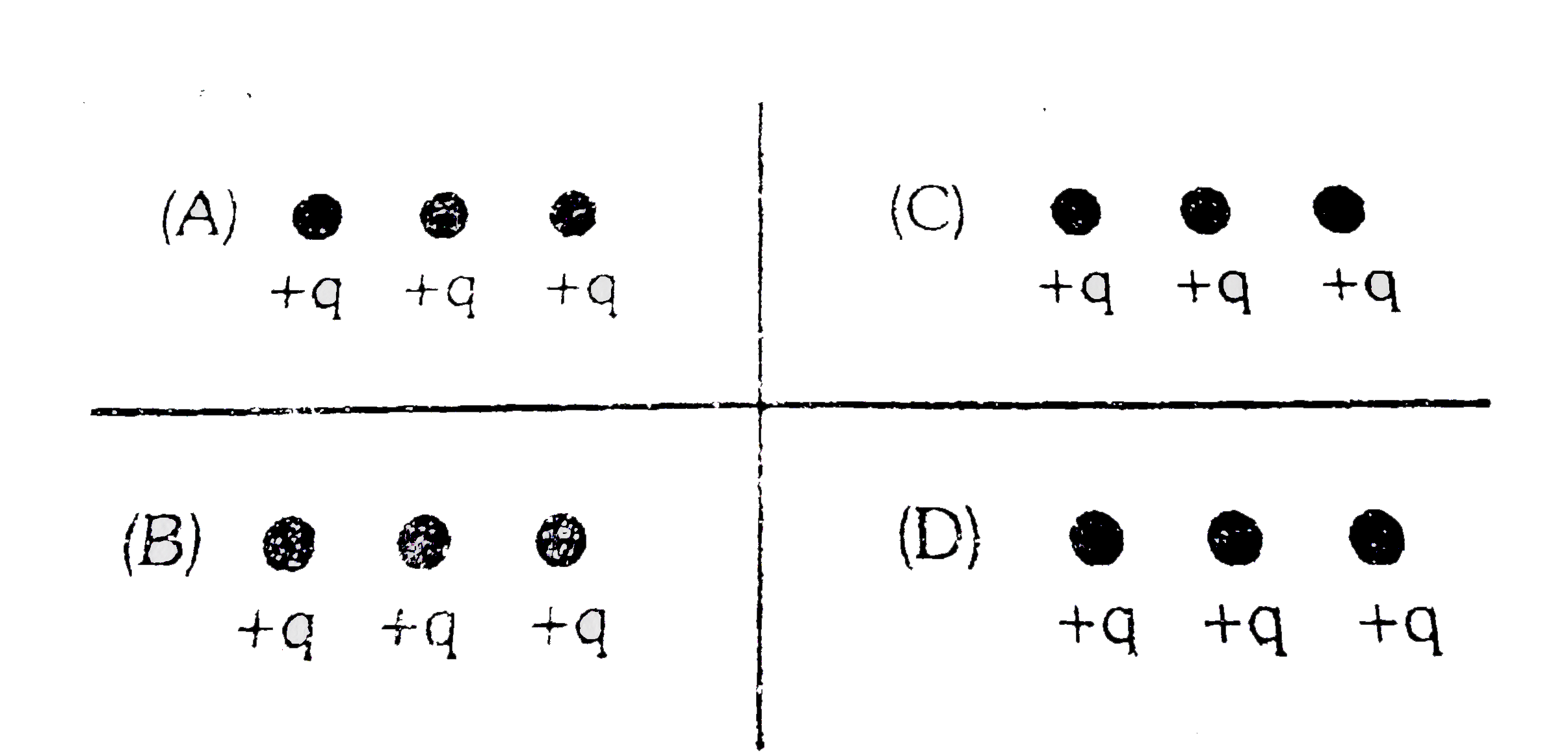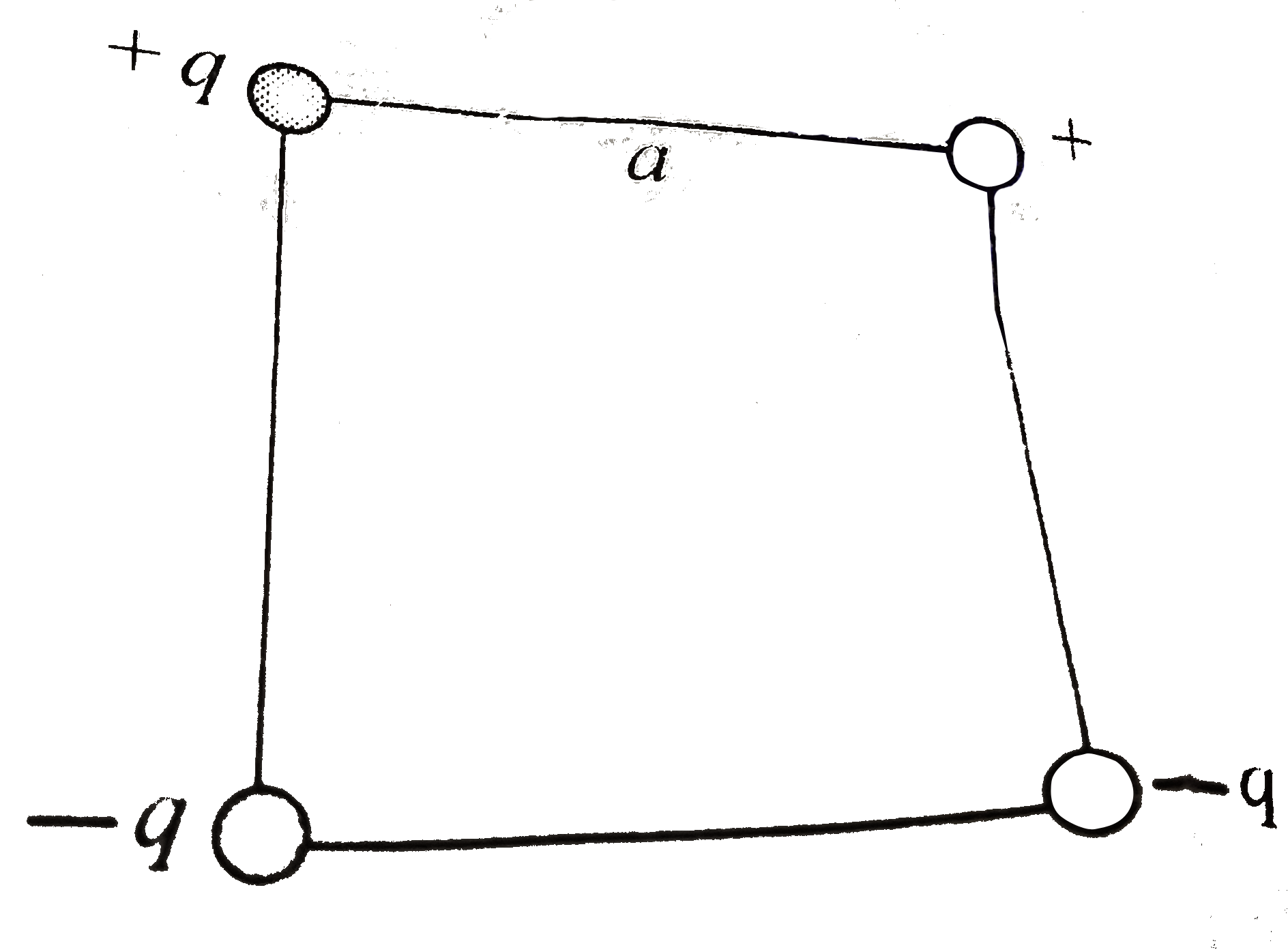Rank the work required to assemble the charge distribution below from leats to greatest. In all cases, the separation between the middle charge and the outer charges are the same. Use a reference of zero potential energy at ∞.

A<B<C=D
C=D<B<A
A<B=C=D
B=C=D<A
The correct Answer is:B
Topper's Solved these Questions
- MISCELLANEOUSBOOK - ALLENCHAPTER - MISCELLANEOUSEXERCISE - Exersice-03
7 Videos
- MISCELLANEOUSBOOK - ALLENCHAPTER - MISCELLANEOUSEXERCISE - ASSERTION-REASON
18 Videos
- MISCELLANEOUSBOOK - ALLENCHAPTER - MISCELLANEOUSEXERCISE - Part -II Example Some worked out Examples
1 Videos
- KINEMATICS (MOTION ALONG A STRAIGHT LINE AND MOTION IN A PLANE)BOOK - ALLENCHAPTER - KINEMATICS (MOTION ALONG A STRAIGHT LINE AND MOTION IN A PLANE)EXERCISE - BEGINNER S BOX-7
8 Videos
- PHYSICAL WORLD, UNITS AND DIMENSIONS & ERRORS IN MEASUREMENT BOOK - ALLENCHAPTER - PHYSICAL WORLD, UNITS AND DIMENSIONS & ERRORS IN MEASUREMENT EXERCISE - EXERCISE-IV
8 Videos
Similar Questions
Knowledge Check
The square shown is the same size is each of the following diagrams. In which diagram is the electrical potential energy of the pair of charges the greatest?
A B
B C
C D
D
When the separation between two charges is increased, the electric potential energy of the charges
View SolutionWhich graph(s) show(s) the correct distribution of potential (at the points between them) due to two like point charges. [X= distance from the charge on left]
View SolutionA capacitor of capacity C is connected with a battery of potential V in parallel. The distance between its plates is reduced to half at one, assuming that the charge remains the same. Then to charge the capacitance upto the potential V again, the energy given by the battery will be
View SolutionFour charges are placed at four corners of a square as shown in figure. The side of the square is a. Two charges are positive and two are negative, but their magnitudes are the same. Now, an external agent starts decreasing all the sides of the square slowly and at the same rate. What happens to the electrical potential energy of the system and what will be the nature of work done by the agent?

View SolutionA charge is moved in an electric field of a fixed charge distribution from point A to another point B slowly. The work done by external agent in doing so is 100J . What is the change in potential energy of the charge as it moves from A to B ? What is the work done by the electric field of the charge distribution as the charge moves from A to B ?
View SolutionA charge is moved in an electric field of a fixed charge distribution from point A to another point B slowly. The work done by external agent in doing so is 100J. What is the change in potential energy of the charge as it moves from A to B ? What is the work done by the electric field of the charge distribution as the charge moves from A to B ?
View SolutionIf 4×1020eV energy is required to move a charge of 0.25 coulomb between two points. Then what will be the potential difference between them ?
View Solution

